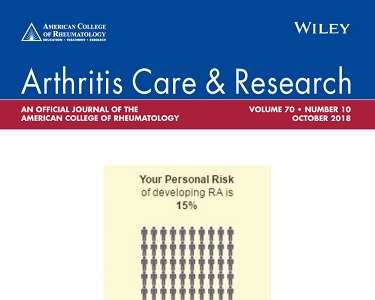Supporting arthritis and employment across the life course: A qualitative study
Academic Publications

Author(s): Jetha, A., Gignac, M. A. M., Bowring, J., Tucker, S., Connelly, C. E., Proulx, L., & Martin Ginis, K. A.
Date: 2018
Resource: Arthritis Care & Research, 70(10), 1461-1468
Objective
To examine the need for and availability and use of formal and informal workplace resources and to uncover differences across the life course in adults with arthritis.
Methods
Focus groups and interviews were conducted with young (aged 18–34 years; n = 7), middle-aged (35–54 years; n = 13), and older adults (≥55 years; n = 25) with a diagnosis of inflammatory arthritis, osteoarthritis, or other rheumatic disease. Participants were asked about their employment experiences, formal and informal workplace resource needs, and availability and use of workplace resources. Differences based on chronological, functional, psychosocial, organizational, and lifespan dimensions of age were examined. A modified grounded theory approach was used to inductively analyze the data.
Results
Young, middle-aged, and older adult participants required similar workplace resources. Across all participants, scheduling modifications tended to be the most needed workplace resource. In contrast, the perceived availability and use of formal workplace resources differed among participants. Young adult participants and those who were newer to their jobs reported that workplace resources were less available and utilized. Middle-aged and older adults reported greater availability of workplace resources. Scheduling accommodations and at-work modifications were the workplace resources that were used most by middle-aged and older adults, respectively.
Conclusion
Similar workplace resources could meet the employment needs of individuals with arthritis across the life course. Attention should be paid to young adults and those who are new to their jobs, because they may perceive more barriers to accessing formal workplace resources and be susceptible to work disability.
Related Research Areas: Disability in the Workplace

